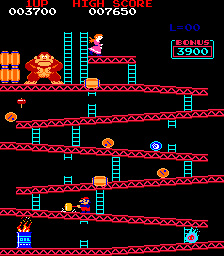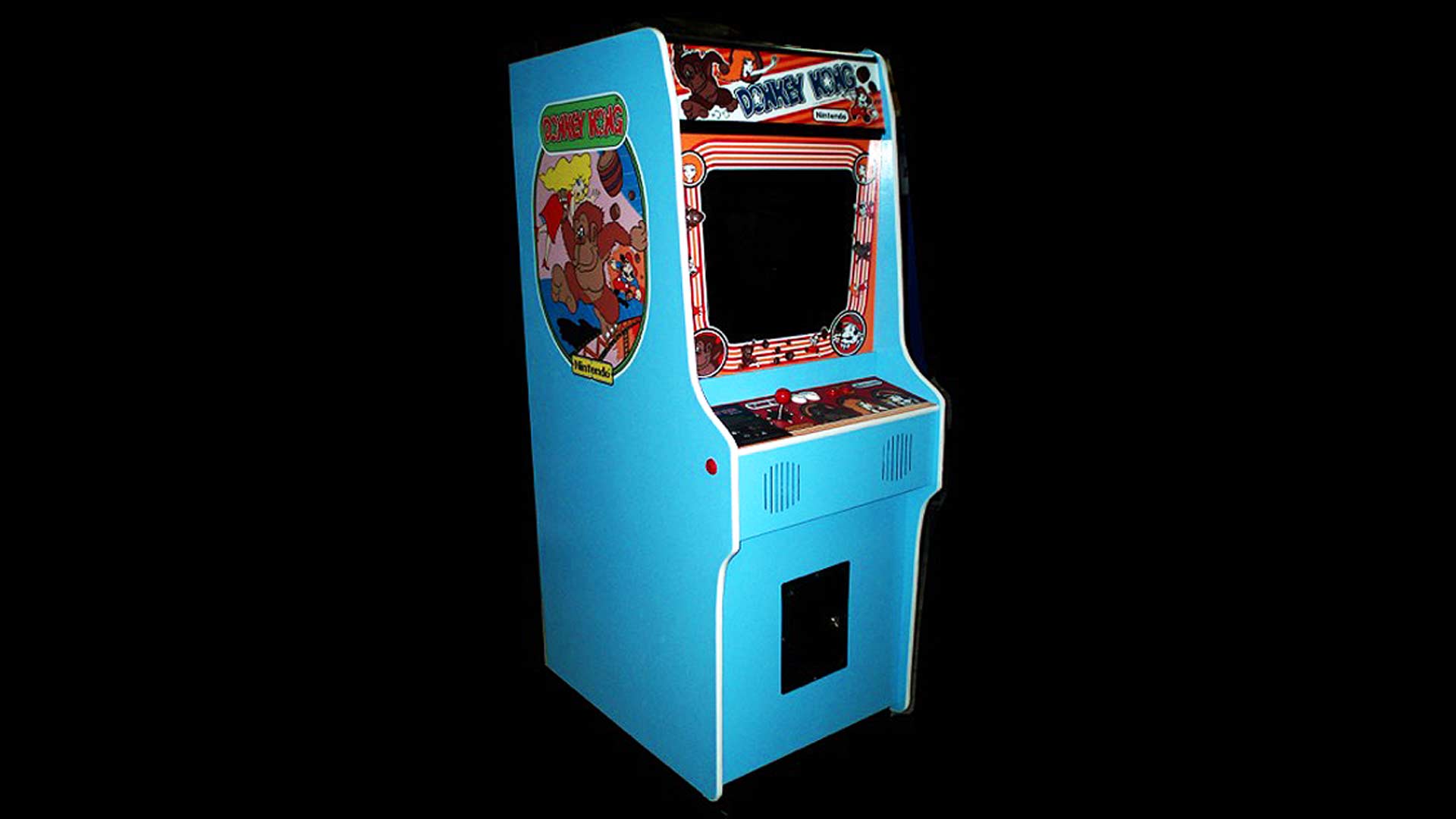Description
Donkey Kong is an arcade game released by Nintendo in North America on July 31, 1981. An early example of the platform game genre, the gameplay focuses on maneuvering the main character across a series of platforms to ascend a construction site, all while avoiding or jumping over obstacles. The originally unnamed character, who was later called Jumpman, then Mario, must rescue a damsel in distress, Pauline, from the titular giant ape, Donkey Kong. The hero and ape would later become two of Nintendo’s most popular and recognizable characters. Donkey Kong is one of the most important games from the golden age of arcade video games as well as one of the most popular arcade games of all time.
Donkey Kong succeeded commercially and critically in North America and Japan. Nintendo licensed the game to Coleco, who developed home console versions for numerous platforms. The Donkey Kong characters appeared on cereal boxes, television cartoons, and dozens of other places. Donkey Kong and Nintendo held video-game market dominance from its release in 1981 until the late 1990s.

Donkey Kong is one of the earliest examples of the platform game genre even prior to the term being coined; the U.S. gaming press used climbing game for games with platforms and ladders. As the first platform game to feature jumping, Donkey Kong requires the player to jump between gaps and over obstacles or approaching enemies, setting the template for the future of the platform genre. With its four unique stages, Donkey Kong was the most complex arcade game at the time of its release, and one of the first arcade games to feature multiple stages, following 1980’s Phoenix and 1981’s Gorf and Scramble
Competitive video gamers and referees stress the game’s high level of difficulty compared to other classic arcade games. Winning the game requires patience and the ability to accurately time Mario’s ascent. In addition to presenting the goal of saving Pauline, the game also gives the player a score. Points are awarded for the following: leaping over obstacles; destroying objects with a hammer power-up; collecting items such as hats, parasols, and purses (presumably belonging to Pauline); removing rivets from platforms, and completing each stage (determined by a steadily decreasing bonus counter). The player typically receives three lives with a bonus awarded for 7,000 points, although this can be modified via the game’s built-in DIP switches. One life is lost whenever Mario touches Donkey Kong or any enemy object, falls too far through a gap or off the end of a platform, or lets the bonus counter reach zero.
The game is divided into four different single-screen stages. Each represents 25 meters of the structure Donkey Kong has climbed, one stage being 25 meters higher than the previous. The final stage occurs at 100 meters. Stage one involves Mario scaling a construction site made of crooked girders and ladders while jumping over or hammering barrels and oil drums tossed by Donkey Kong. Stage two involves climbing a five-story structure of conveyor belts, each of which transport cement pans. The third stage involves the player riding elevators while avoiding bouncing springs. The fourth and final stage requires Mario to remove eight rivets from the platforms supporting Donkey Kong; removing the final rivet causes Donkey Kong to fall and the hero to be reunited with Pauline. These four stages combine to form a level.
Upon completion of the fourth stage, the level then increments, and the game repeats the stages with progressive difficulty. For example, Donkey Kong begins to hurl barrels faster and sometimes diagonally, and fireballs speed up. The victory music alternates between levels 1 and 2. The fourth level, however, consists of 5 stages with the final stage at 125 meters. The 22nd level is colloquially known as the kill screen, due to an error in the game’s programming that kills Mario after a few seconds, effectively ending the game.
